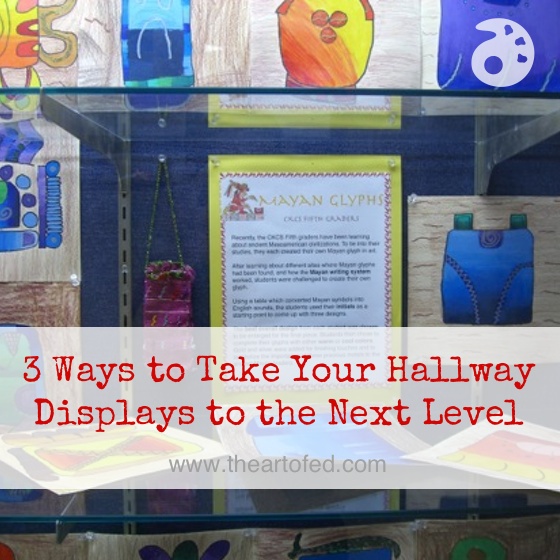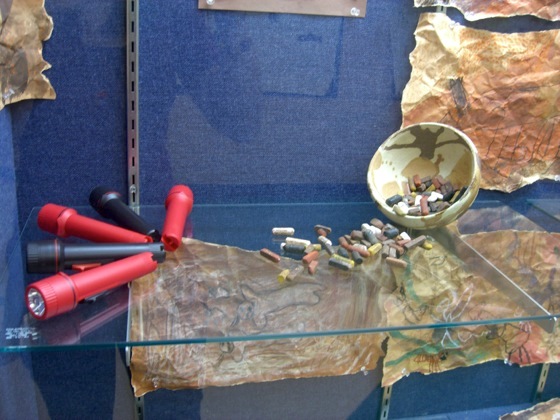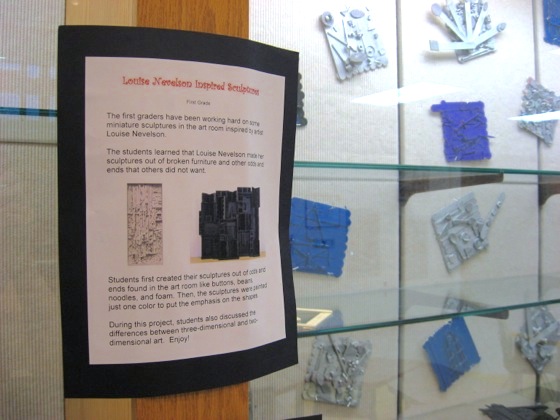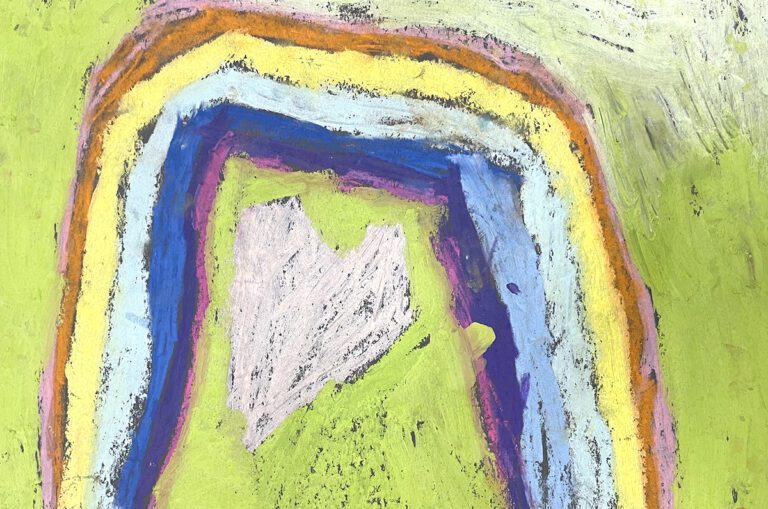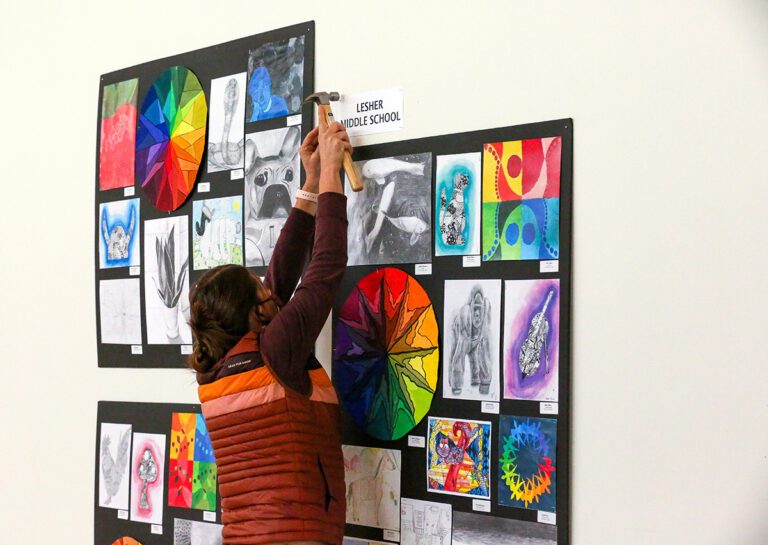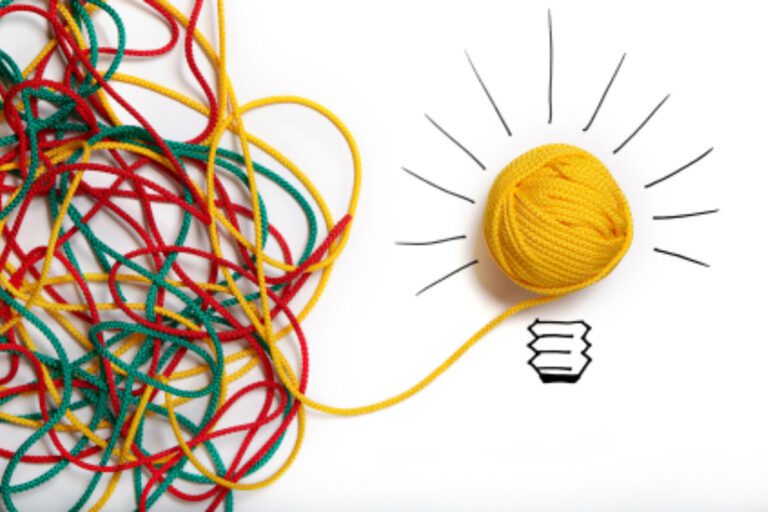I have sort of a love-hate relationship with hallway displays. Yes, I absolutely love brightening the walls and display cases in the school, but putting art up and tearing it down can be extremely time consuming. I found that if I could help educate people in my school about the art room through my hallway displays, I actually looked forward to spending the time. Here are some simple tips to pump up the volume on your hallway displays.
1. Help Others Visualize the Process
One question other teachers often ask when seeing student work in the hallway is, “Wow! How did you do that!?” An effective way to give viewers an inside peek into an artistic process is to add some actual art materials to your display. Here are some examples.
Display some of the materials students used along with the project. Here you can see some of the found objects students used for these sculptures right in the bottom of the display case.
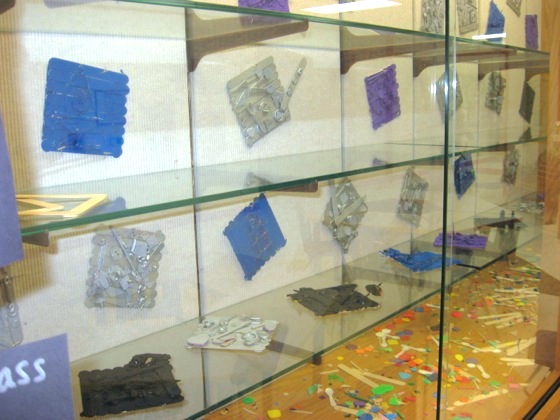
Put some of the materials you used to introduce the project alongside the results. Here I’m showing how students used flashlights to explore the art room like a cave, then used natural pigments to create their artwork.
Outline the steps you did so others can create their own versions. On this bulletin board, I made simple signs to show the steps my students took to create the displayed zentangles.
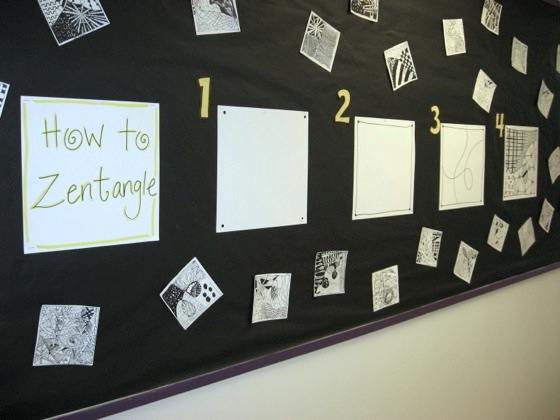
2. Add a Sign
In the same vein, adding an informational sign to your hallway display can peak interest. Admittedly, this is more for the adults in the school than the kids, but it really helps start some great conversations about what goes on in your room. If you put up a sign with every project, they come to be expected and people start to seek them out. You can include things like project materials, vocabulary and inspiration. I suggest keeping a folder on your computer with past signs so that if you repeat a project, you can tweak the wording and print a new copy. Easy peasy.
3. Use QR Codes
A more involved yet amazing way to increase a viewer’s experience is to use QR codes in the hallway. You can have one code on your sign that links to a particular student talking about the work, a video of an inspiration artist, or a website telling more about the techniques used. You can also have a QR code on each piece of art that links to an audio or video clip of that particular student taking about his or her work. Lots of cool possibilities here!
Here’s one more related tip: Each time you put up a new display, consider sending an email out to staff members. Keep it short and sweet. Something like, “Hey everyone! Just wanted to let you know that there are some great first grade sculptures in the front display case and some magnificent murals lining the 4th grade hallway. Be sure to check them out and let the students know what you think!” Just making administrators, other teachers and support staff aware that there is new art in the building can make a big difference.
Using these techniques will start to make people more aware of the rigors of your program. In addition, because the displays will be educational, you can feel good about leaving each one up a little longer, making less work for yourself overall. That’s a win-win in my book! If you’re looking for even more simple ways to make art a valued part of your school community, check out 50 ideas right here.
Tell us, how do you work the display areas in your school? Do you put extra information with the art, or let it speak for itself?
Are there any other cool ideas out there regarding display possibilities? Share in the comments section!
Magazine articles and podcasts are opinions of professional education contributors and do not necessarily represent the position of the Art of Education University (AOEU) or its academic offerings. Contributors use terms in the way they are most often talked about in the scope of their educational experiences.
